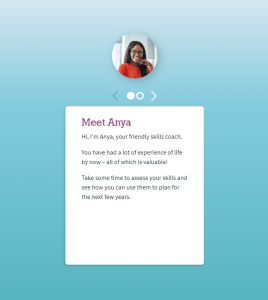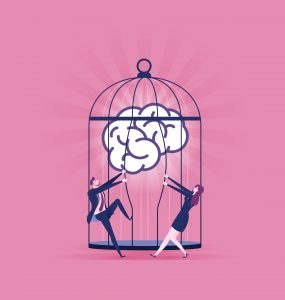We’re falling behind. There’s a yawning gap in productivity between Britain and the rest of Europe, commonly referred to as the ‘productivity puzzle’. Indeed, it seems the UK is missing a piece of the jigsaw. It all started a short while before the 2008 financial crisis, when our productivity began falling behind other countries. We also experienced a comparatively more severe decline throughout and the impact of this plummet can still be felt today.
After the crisis, employment recovered well; in fact, the growth of employment exceeded the more slow-to-recover growth in demand. And yet, productivity is still somehow lagging. Why?
What exactly is productivity and why would it matter to HR and L&D?
Productivity refers to the efficiency of a process. It’s measured by how much we get out from what we put in, or the input-to-output ratio. Remember those playdough spaghetti-making machines you had as a kid? You get back what you put in, with an added benefit (you now have spaghetti!).

Let’s apply that on a wider scale: when a nation is more productive, this results in more spending money. Nations aim to maintain that growth so that purchasing power gets higher and its inhabitants hopefully get happier.
Imagine making ever-increasing spaghetti from only one playdough container, but in this metaphor you’re the playdough and the spaghetti is your company’s net value. That’s what we call productivity growth: the input stays the same, but your output grows exponentially. This is what all companies are seeking and it’s important for HR and L&D to see how they can amplify it… read on to find out.
Could you be more productive at work?
There’s a good chance you’ve jumped to answer yes to that question. Your mind has probably already started playing a protesting showreel of how hard you’ve worked and the hours you’ve put in but be honest. Productivity isn’t about brute force. It’s about output.
As McKinsey have illustrated, increased hours worked (column 2) does not always result in higher productivity (column 3). In fact, the only country above to see an increase in labour productivity between 2000 and 2015 is also the only one that saw a reduction in the average hours worked.
Good news for the tired and overworked: working harder is not the key to productivity. So what other options are out there? How can we all work smarter instead of working harder for the same results? Let’s step out of the economics classroom and look more specifically at how HR/L&D can use increased probability to gain a seat at the Board table.
Where to start
I’ll be focusing on two major puzzle pieces that fall within the HR and L&D remit. These will contribute to boosting the UK’s productivity over the next decade or so.
- Accelerating the adoption of digital technologies as part of a wider solution
- Collectively investing more in training and skills development
These are essential to help us adapt and make the most of the energy and efforts of any workforce. This is particularly vital because Britain’s is unlikely to expand significantly as its population continues to age.
These two aspects (digital adoption and skills development) are about meeting the needs of a rapidly changing digital economy and sociopolitical landscape. We must give people the tools they need to grow and make the most of their potential in an unpredictable world.
Training is key to productivity
Reskilling and retraining each generation to prepare for the future of work is a must. This starts early, but that doesn’t mean it stops when we leave school. The successful individuals will be those who can adapt and change – lifelong learners. To close the skills gap, we need to re-educate and reskill not just the new wave of employees but also current workers of all ages.
As part of a collaborative project between Saffron and the TUC, we recently developed a skills assessment tool targeted toward the 50+ generation. This is an invitation to value the wealth of experience older workers have accumulated, rather than dismiss anyone over 25 as ‘outdated’.
This tool, whilst a self-assessment, was based on behaviours. It includes an algorithm to detect those that are less boastful about their skills and those that are overly confident. The tool also asks pertinent questions about when that skill was last used rather than just a simple quiz or survey.

Shifting our focus to soft, transferable ‘essential’ skills should be a big part of skills development. We’re living longer lives than ever before and going through multiple careers as the demands of the market change at speed while job security becomes increasingly uncertain for most.
The ability to learn and be cognitively flexible may soon prove more valuable than any knowledge set or area of expertise. Though most of the studies on cognitive flexibility (the ability to switch between tasks and concepts) have been done on young children, some studies have suggested digital training programs and video games can impact the brain functioning of adults, too (sources below).
Digital transformation
There isn’t just a skills gap in the UK; there’s also an adoption gap when it comes to technology. We’re not currently making the most of the technology available, particularly with digital and next-generation technologies like machine learning. These have the potential to significantly boost productivity growth.
Here’s the thing about us humans: we don’t like change. Unless we see a clear way that a certain change will benefit us, we’d rather stick to our less efficient but familiar ways than take a leap into the unknown.
Add to this a lack of awareness about technology and how difficult we’re finding it to trust the information we receive, and you’ve got some solid barriers to adoption.
So how do we overcome those barriers and break free from the status quo?

Saffron has been overcoming this resistance using behavioural science-based change campaigns for years. To get people on board, it’s vital to tap into people’s intrinsic motivators (what’s in it for them?) and create a collaborative environment in which to explore their learning and skills. Without this, they’ll switch off and it doesn’t matter how good the technology is or how expensive the training was.
Beyond initial training, point-of-need learning tools (like Saffron eaSe, wink wink) can guide you on the job as you try to figure out how a new system or technology works. Instead of getting frustrated, overwhelmed and needing to wait for someone with free time (which no one has because we’re all working so hard without being more productive!), you can seamlessly get the answer to your question and carry on.
Making change easier to process is part of overcoming resistance to it. Wider infrastructures in the form of investment and academic research are also needed to make the most of the UK’s digital transformation, but it’s important not to lose sight of the real people who will end up using these tools every day.
The end of the productivity puzzle?
There are a lot of open-ended questions when it comes to productivity. But what’s clear is that HR and L&D can effect change in their organisations.
In their breakdown of the productivity puzzle, the authors of the McKinsey discussion paper ask: “How can reskilling and upskilling be delivered affordably and at scale?” I’d argue digital solutions like the ‘Value my Skills’ tool make reflecting on one’s skills, and in the context of how they behave, more easily accessible, particularly for adult workers who don’t necessarily have learning at the forefront of their minds.
Another question they raise is: “How can firms overcome change resistance and inertia in adopting new practices and technologies?” One of the main barriers to adoption is change resistance. Having help on hand in the form of supportive tools like eaSe or bespoke systems training can hold the hand of each learner and help overcome resistance for successful adoption.
In many ways, increasing productivity is a never-ending puzzle. Every completed jigsaw merely reveals a larger picture that needs to be filled. Nevertheless, for those of us in the L&D industry that thrive on this kind of challenge, it represents a constant opportunity to seize competitive advantage – and to prove ourselves to the business. There’s a lot of satisfaction to be gained by experimenting with new ways of adding value where it counts and working with organisations to efficiently train, upskill and reskill workers while adopting digital tools that boost productivity.
To get things off to a flying start, get in touch to discuss what can be done in your organisation.
Academic sources
- Klimova, Blanka (September 2017). “Online brain training programs for healthy older individuals”. In Frasson, Claude; Kostopoulos, George (eds.). Brain function assessment in learning: first international conference, BFAL 2017, Patras, Greece, September 24–25, 2017: proceedings.
- Tetlow, Amber M.; Edwards, Jerri D. (December 2017). “Systematic literature review and meta-analysis of commercially available computerized cognitive training among older adults”. Journal of Cognitive Enhancement.
- García-Betances, Rebeca Isabel; Cabrera-Umpiérrez, María Fernanda; Arredondo, María T. (January 2018). “Computerized neurocognitive interventions in the context of the brain training controversy”. Reviews in the Neurosciences.






